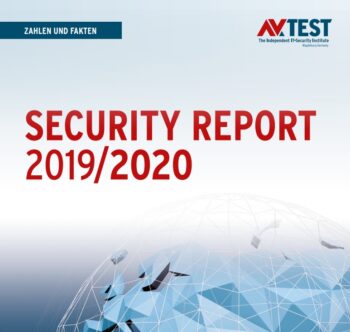
The AV-TEST laboratory publishes many facts and analyzes on the threat situation in its new AV-TEST Security Report 2019/2020.
2019 showed a new trend in the malware industry that continues this year. The development of malware is divided into two areas: while on the one hand the automated production of mass malware for broad-based online attacks continues to increase rapidly, on the other hand cybercriminals develop sophisticated malware for targeted attacks on companies and critical infrastructure. The present AV-TEST Security Report 2019/2020 provides answers to all questions about the development of the current threat situation.
Massive Microsoft attacks with mass malware
In 2019, the use of mass malware, i.e. automatically generated malware, brought cybercriminals considerable profits. And so the rate of malware distributed mostly via e-mail and over the Internet rose sharply. With more than 114 million (114.312.703) newly developed malware programs, the malware industry broke a sound barrier in 2019, making it more active than ever before. But the analysis of the current acquisition figures for the first quarter of 2020 also promises significant growth rates for this year: In the first quarter of the current year, the AV-TEST systems recorded over 43 million newly programmed samples. Accordingly, an explosion in the development of new malware is to be expected by the end of 2020, which could level off at over 160 million new samples for the entire year. The threat situation from mass malware could thus reach a new dangerous high in 2020. The development rate of new malware is currently 4,3 samples per second!
One reason for this dramatic development can be seen as positive, because the massive development of new malware samples can be explained, among other things, by the high level of protection offered by current security products. This applies in particular to protection solutions for Windows systems. Because the majority of all malware continues to target the operating system that is by far the most frequently used worldwide. In 2019, over 78 percent of the malicious code newly developed by cyber criminals was in Windows systems. In the first quarter of 2020 this value will increase further to over 83 percent.
Advanced Persistent Threats (APTs): Trend towards targeted attacks
The massive increase in targeted attacks using Advanced Persistent Threats (APTs), on the other hand, can hardly be quantified: On the one hand, tactical attacks of this kind are strategically prepared well in advance and targeted against companies and organizations that manage extremely valuable information. On the other hand, such attacks, mostly by state-organized attackers against ministries, research and production facilities as well as financial companies and other institutions in a country, rarely reach the public. The fact is that companies in particular are increasingly having to defend themselves against targeted attacks on their digital infrastructure. The AV-TEST Institute is reacting to the increase in known APT attacks with a test and certification program for security solutions based on the MITER standard. You can find information about the tests to check the ability to defend against APT attacks on our website.
The current safety report can be downloaded free of charge from AV-TEST
More about the report at AV-Test.org
